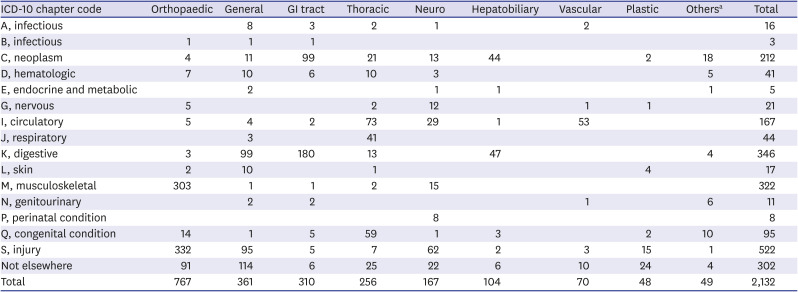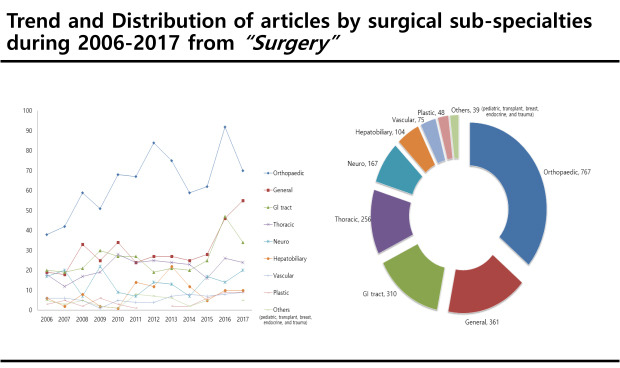1. Noble DJ. Public health in Democratic People's Republic of Korea. BMJ Glob Health. 2019; 4(2):e001440.

2. Shin BK, Jeon WT. National health priorities under the Kim Jong Un regime in Democratic People's Republic of Korea (DPRK), 2012–2018. BMJ Glob Health. 2019; 4:e001518.

3. Watching North Korea. Sci Am. 2018; 319(5):84.
4. Kim JE. Nutritional state of children in the Democratic People's Republic of Korea (DPRK): based on the DPRK final report of the national nutrition survey 2012. Pediatr Gastroenterol Hepatol Nutr. 2014; 17(3):135–139. PMID:
25349828.



5. Grundy J, Biggs BA, Hipgrave DB. Public health and international partnerships in the Democratic People's Republic of Korea. PLoS Med. 2015; 12(12):e1001929. PMID:
26714189.

6. Shin HY, Sung SH, Choi SY, Ahn HS, Jeon JE, Lee DY. An analysis of trends in medical journal articles of botanical drugs in North Korea. Health Soc Welf Rev. 2017; 37(4):535–563.
7. Cho KS. Infant/child mortality and humanitarian aids to North Korea. Health Soc Welf Rev. 2016; 36(3):485–515.
8. Yoon HJ, Woo SH, Kim D, Um JH, Park SH, Seo AR. Changes in medical research trends of North Korea after economic sanctions: a PRISMA-compliant systematic literature review of North Korean medical journals. Medicine (Baltimore). 2019; 98(29):e16500. PMID:
31335718.
9. Ha S, Yoon SJ, Chun BC, Kim KJ, Roh SY, Lee EJ, et al. Bibliographical characteristics of North Korean medical journals and articles. J Korean Med Sci. 2018; 33(27):e185. PMID:
29999502.

10. Hong ST. North Korean medical journals in the Galapagos. J Korean Med Sci. 2018; 33(27):e209. PMID:
29962927.

11. Hur K, Park DE, Oh HK, Yang HH, Ko D, Kim MH, et al. Discrepancies in general surgery medical terminology between South and North Korea. Korean J Med Educ. 2018; 30(1):51–56. PMID:
29510608.



12. Ko D, Oh HK, Jo J, Yang HH, Kim MH, Kim MJ, et al. Discrepancy of medical terminology regarding colorectal surgery between South and North Korea. Ann Coloproctol. 2018; 34(5):248–252. PMID:
30419722.



13. Ro DY, Kim DH, Park SH. North Korea must be global scale cohort, not a Galapagos in the medical research field. Asian Pac J Cancer Prev. 2019; 20(9):2789–2794. PMID:
31554378.



14. Lee CJ, Lee S, Kim HJ, Kang YA. Towards understanding tuberculosis-related issues in North Korea: a narrative review of North Korean literature. Tuberc Respir Dis (Seoul). 2020; 83(3):201–210. PMID:
32578408.



15. Park DH, Choi MH, Lim AY, Shin HY. An analysis of infectious disease research trends in medical journals from North Korea. J Prev Med Public Health. 2018; 51(2):109–120. PMID:
29631346.


16. Park KB, Roh YH, Lee-Park O, Park S. History of neurosurgery in Democratic People's Republic of Korea. World Neurosurg. 2015; 84(3):855–859. PMID:
25827044.

17. Ferreira Ido R, Vosgerau DS, Moyses SJ, Moyses ST. Normative measures of the health in the school program: content analysis associated with ATLAS TI software. Cien Saude Colet. 2012; 17:3385–3398. PMID:
23175414.

18. Soratto J, Pires DEP, Friese S. Thematic content analysis using ATLAS.ti software: potentialities for researchs in health. Rev Bras Enferm. 2020; 73(3):e20190250. PMID:
32321144.

19. Lee JT, Cho SA. Biomechanical evaluation of laser-etched Ti implant surfaces vs. chemically modified SLA Ti implant surfaces: removal torque and resonance frequency analysis in rabbit tibias. J Mech Behav Biomed Mater. 2016; 61:299–307. PMID:
27093590.


20. Canonica GW, Caria M, Venuti D, Cipro G, Ciprandi G, Bagnasco M. T cell activation through different membrane structures (T3/Ti, T11, T44) and frequency analysis of proliferating and interleukin-2 producer T lymphocyte precursors in aged individuals. Mech Ageing Dev. 1988; 42(1):27–35. PMID:
2964547.


21. Goyal A, Gluckman TJ, Tcheng JE. What's in a name? the new ICD-10 (10th revision of the International Statistical Classification of Diseases and Related Health Problems) codes and type 2 myocardial infarction. Circulation. 2017; 136(13):1180–1182. PMID:
28947477.

22. Sabiston DC, Townsend CM. Sabiston Textbook of Surgery: the Biological Basis of Modern Surgical Practice. Philadelphia, PA: Elsevier Saunders;2012.
23. Canale ST, Azar FM, Beaty JH, Campbell WC. Campbell's Operative Orthopaedics. Philadelphia, PA: Elsevier;2017.
24. Yim ES, VanRooyen MJ. Health and disaster diplomacy in North Korea: ensuring access and accountability in complex political environment. Prehosp Disaster Med. 2009; 24(4):294–296. PMID:
19806552.

25. Horton R. Offline: North Korea-the case for health diplomacy. Lancet. 2017; 390(10099):1016. PMID:
28901926.


26. Lee AU, Linton H, Kilsby M, Hilmers DC. A program to treat hepatitis B in North Korea: a model of antiviral therapy in a resource-poor setting. Gut Liver. 2018; 12(6):615–622. PMID:
30157545.



27. Podboy A, Kolahi KS, Friedland S, Louie CY. Endoscopic submucosal dissection is associated with less pathologic uncertainty than endoscopic mucosal resection in diagnosing and staging Barrett's-related neoplasia. Dig Endosc. 2020; 32(3):346–354. PMID:
31306525.


28. Ferrell B, Sun V, Hurria A, Cristea M, Raz DJ, Kim JY, et al. Interdisciplinary palliative care for patients with lung cancer. J Pain Symptom Manage. 2015; 50(6):758–767. PMID:
26296261.



29. Emons G, Steiner E, Vordermark D, Uleer C, Bock N, Paradies K, et al. Interdisciplinary diagnosis, therapy and follow-up of patients with endometrial cancer. guideline (S3-level, AWMF registry number 032/034-OL, April 2018) - part 2 with recommendations on the therapy and follow-up of endometrial cancer, palliative care, psycho-oncological/psychosocial care/rehabilitation/patient information and healthcare facilities. Geburtshilfe Frauenheilkd. 2018; 78(11):1089–1109. PMID:
30581199.



30. Badea M, Baroş A, Bohîlţea RE, Julea IE, Furtunescu FL, Istrate-Ofiţeru AM, et al. Modern interdisciplinary monitoring of cervical cancer risk. Rom J Morphol Embryol. 2019; 60(2):469–478. PMID:
31658320.

31. Harrell AG, Heniford BT. Minimally invasive abdominal surgery: lux et veritas past, present, and future. Am J Surg. 2005; 190(2):239–243. PMID:
16023438.


32. Antoniou SA, Antoniou GA, Antoniou AI, Granderath FA. Past, present, and future of minimally invasive abdominal surgery. JSLS. 2015; 19(3):e2015.00052.

33. Kim SG, Kim KJ, Ha S, Kim YH. A peek into the Galapagos of the medical research field. Lancet. 2016; 388(10063):2989–2990.



